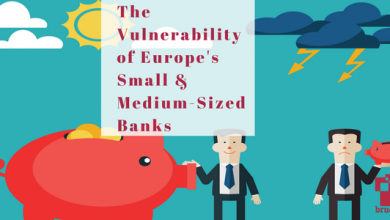This oped is published in a number of European newspapers such as El Pais, Corriere, FAZ, Le Monde, Postimees.ee, Voice of Ukraine




The assistance to Ukraine has been dominated by weapon deliveries and military support. Over the last month, there has been additionally a growing discussion about the financial effort that will be required to rebuild Ukraine after the war. Calls of a new Marshall Plan largely financed by the international community but also possibly by seizing Russia’s foreign assets in reparation are rife. While this will be critical for Ukraine’s future when the conflict ends, they do not answer the immediate need of financial assistance, to which the international community has only provided partial responses.
Short-term financial assistance needs have exploded. Back in March, the IMF estimated that Ukraine’s gross external financing need would only amount to some USD 4.8bn in 2022. This is now overtaken by events. Even though capital outflows have been measured (largely due to proactive capital flow management by the National Bank of Ukraine, NBU), the fiscal deficit is much larger than planned. The monthly deficit in April was around $2.8bn and estimates from May amount to $ 4 to 5bn per month. With NBU reserves to the tune of 30bn and with the current external financing gap, FX reserves could be exhausted within 6 months.
The May 20th G7 Finance Ministers communique is therefore an important step in correcting that. G7 countries have committed to help stabilize the Ukrainian economic and financial backdrop. However, a clear framework for doing so is still missing.
The European Commission is working on increasing its macro-financial assistance by up to 9 billion euros but mobilizing these new loans requires an IMF programme. The European Bank for Reconstruction and Development and the International Finance Corporation could together add some $3.4 billion to support Ukrainian private sector but this would require a macroeconomic framework. And the United States has just passed an ambitious package of assistance to Ukraine for some $40bn that includes $8.8 billion for a dedicated fund intended to help Ukraine’s government continue to function. Moreover, it commits $4.4 billion for international disaster assistance, part of an effort to stem the disruption to the global food chain as a result of the war in the form of grants. The sum of these resources is substantial but the overarching organising framework is missing.
More structured financial assistance needs to be assembled over the coming weeks. The US Administration has voted the funds, the EU has set up a trust fund to which Member States can pledge bilateral assistance in the form of grants but that is today more designed for long term reconstruction than for short-term financial assistance. As a result, a new IMF/MFA programme supplemented by a range of bilateral and multilateral assistance needs to be assembled shortly. It doesn’t require macro-conditionality but would greatly benefit from the credibility of IMF staff monitored programme to demonstrate the financial commitments of the international community, improve international coordination and facilitate two important additional sources of external financing:
First, a programme providing considerable official external assistance would either have to come in the form of actual grants or relieve the burden of current external debt. Of the nearly USD 100bn of public debt, about half is foreign currency denominated. With the current level of economic distress, Ukraine has completely lost access to market financing. International issuance could only come with international guarantees but it would be hard to justify new issuance without at least a stand-still on the repayments due in 2022/2023. A new international financial support programme could therefore provide the necessary coordination framework to arrange an international debt restructuring. Loans with guarantees but without any debt relief could limit any form of private sector investment into Ukraine, thereby further weighing on the economy. Some form of debt restructuring could be secured on more or less concessional terms depending on the extent and length of the official external support.
Second, the ECB, possibly alongside the Federal Reserve, should extend a bilateral swap line to the National Bank of Ukraine in the context of one such external financial assistance programme. This is no substitute to budgetary assistance but would make the NBU’s FX and capital flows management policies more credible and effective. The ECB has openly mentioned the possibility of one such swap line in March but has not followed suit. This would prove the EU’s unwavering commitment to support the NBU and even if untapped, would help to reduce foreign exchange strains and limit potential runs for hard currency in Ukraine’s financial sector.
All in all, given the large GDP contraction, the shock to the current and financial accounts, and the major fiscal needs, official financing will prove necessary for Ukraine and should be an essential part of the international community’s strategy against the Russian aggression. It is preferable that it comes in early under an organised framework to maximise its effect and increase the display of international support beyond weapons supply, rather than a piecemeal manner through bilateral support. Thinking of Ukraine’s reconstruction tomorrow is important but thinking of its financial needs today is more pressing and requires urgent proposals by the IMF and the international financial community.

